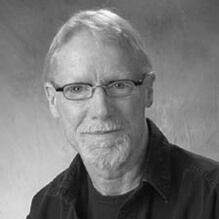Corporate Knights editor-in-chief Tyler Hamilton spelled out the specifics of a World Bank report yesterday that says investment in clean technologies is expected to exceed $6.4 trillion (U.S.) in developing countries over the next decade. Of that, $3.6 trillion is expected to go toward water technologies, while another $1.9 trillion is slated for renewable energy. The rest will be aimed at low-emissions waste and transportation technologies. The bank expects large multinationals to absorb most of the cleantech market in developing countries, but it estimates that small and medium-sized businesses will secure $1.6 trillion, mainly in manufacturing equipment, installation, civil works, retail, operations and maintenance.
The World Bank also announced earlier this week that it would work with the private sector to close the gender gap in employment opportunities in developing countries through a new initiative called She Works. The International Finance Corporation, a Bank Group member focused on private sector development, launched the partnership on Monday to increase job opportunities for over 300,000 women over the next two years. Ten companies have agreed to implement the mentoring, flexible work arrangements and training that is necessary to enhance women’s work opportunities. This is especially notable in developing countries where nine out of 10 jobs are in the private sector.
Meanwhile, media outlets around the world – not to mention environmental groups like Greenpeace – were quick to run images of a beautifully heart-shaped solar PV plant on New Caledonia’s largest island, which is located in the Pacific Ocean about 1,200 km east of the Australian Gold Coast. The plant’s design was inspired by the “Heart of Voh,” a nearby wild mangrove vegetation that has naturally shaped itself into a heart. It truly is beautiful, except for one problem: it doesn’t exist. Not to say it won’t exist. Conergy, which is handling engineering and construction of the plant for utility TIEA Energie, says the plan is to finish construction some time in the first quarter of 2015. Once complete, the plant will boast 7,888 PV panels capable of generating up to 2 megawatts and will help the island, which currently depends on fossil fuels for power generation, reduce its carbon dioxide emissions by two million tonnes over the plant’s 25-year projected lifetime. Let’s hope the real photograph of the finished plant is as stunning of the artist’s rendering that many are taking at face value.
The state of California also began cracking down on ride-share apps that allow anyone with a clean driving record to pick up passengers. The service is being offered by major apps, such as Uber, Lyft and Sidecar, which allow drivers to pick up several customers along the same route. The benefits of ride sharing for reducing pollution and alleviating traffic and public transit congestion are obvious. But, regulators say it breaks Californian rules preventing charters from charging passengers individual fares. Sidecar said it disagrees with the rule claiming it was written for limousines before smartphones existed. It will continue to offer shared rides in the meantime.
Following the U.N. Climate Summit earlier this week in New York City, the European Union is looking to Barack Obama to show that he is serious about leading efforts to reach a meaningful climate change agreement in Paris in 2015. Governments have until March 2015 to determine what they are prepared to offer at the negotiations in Paris, giving the U.S. government six months to show the world that it can make good on its promises. The Guardian reported that Connie Hedegaard, the point-person responsible for ensuring that the EU meets its climate change targets, said “it matters a lot what will come out of America in the first quarter of 2015,” and that other major countries, such as India and China, will be watching closely.






